| Countrywide Corns |  |
| Forum Syndicate 2019 | Pigeon World Forum Syndicate Bird takes 44th Place, in the 2019 RPRA One Loft Final.The Bird is Frans Zwol Bloodline, Bred and supplied by Darren Palmer (Oldstrain)  |
| Forum Syndicate 2019 | Pigeon World Forum Syndicate also takes 100th Place, in the 2019 RPRA One Loft Final. The Bird is Frans Zwol Bloodline, Bred and supplied by Darren Palmer (Oldstrain)

|
| Who is online? | In total there are 79 users online :: 1 Registered, 0 Hidden and 78 Guests :: 2 Bots George & MorganMost users ever online was 833 on Wed Nov 10, 2021 12:30 pm |
| Forum Syndicate 2017 | Pigeon World Syndicate Bird takes 81st Place in the 2017 Final Race, The Bird is Dia Evans Bloodlines and was Bred and supplied by Tumley Lofts Stud. 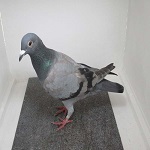 |
| R.P.R.A Certificate. | Pigeon World Forum Syndicate take 81st Place in the 2017 R.P.R.A. Final, with a Pigeon Bred and Supplied by Tumley Lofts Stud.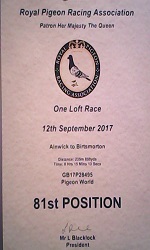 |
| Top posting users this week | |
| Statistics | We have 1296 registered users
The newest registered user is nelsa19ira
Our users have posted a total of 222679 messages in 14001 subjects
|
| Oldstrain/Darren`s Winner of winners. 2012. | 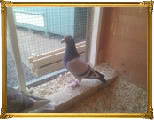 |
| From Fed Topper to Master Chef |  The N.E.H.U race from Melton Mowbray 21/4/2012 was won by Peel bros of South Shields, they took 1st club 1st fed, also taking 2nd and 4th club and 15 of the 25 birds clocked in the club......well done Peel brothers. The N.E.H.U race from Melton Mowbray 21/4/2012 was won by Peel bros of South Shields, they took 1st club 1st fed, also taking 2nd and 4th club and 15 of the 25 birds clocked in the club......well done Peel brothers. |
| | | New potential problem. |  |
| | | Author | Message |
|---|
halcanada
Youngbird

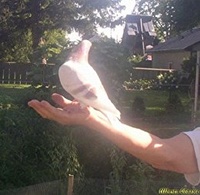
Posts : 4206
Join date : 2014-03-11
Age : 84
Location : Southern Ontario. Canada.
 |  Subject: New potential problem. Subject: New potential problem.  Wed Apr 02, 2014 7:50 pm Wed Apr 02, 2014 7:50 pm | |
| |
|   | | Rudderfett
Youngbird

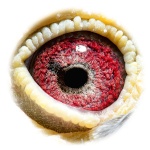
Posts : 2152
Join date : 2009-09-27
Age : 55
Location : pembrokeshire
 |  Subject: Re: New potential problem. Subject: Re: New potential problem.  Wed Apr 02, 2014 8:47 pm Wed Apr 02, 2014 8:47 pm | |
| I wouldn't be surprised if cases similar to this are going undetected in the UK, these symptoms are very common to pigeons as we all know and when we get sic pigeons we bin them without any investigation. very interesting post. |
|   | | halcanada
Youngbird


Posts : 4206
Join date : 2014-03-11
Age : 84
Location : Southern Ontario. Canada.
 |  Subject: Re: New potential problem. Subject: Re: New potential problem.  Thu Apr 03, 2014 1:27 am Thu Apr 03, 2014 1:27 am | |
| Have to assume they have been around for hundreds of years. Just now being recognised. However, are birds today over medicated from 50 or so years ago? Losing the natural immunity? PMV1 and 2 and young birds sickness was not heard of back then. Interesting! So are German birds the source? Doubt it. I assume before too long some company will come up with a cure. Sick birds just nuke em. My opinion anyway. |
|   | | Ginger
Youngbird


Posts : 1419
Join date : 2010-03-14
Age : 80
Location : Guernsey Channel islands
 |  Subject: Re: New potential problem. Subject: Re: New potential problem.  Thu Apr 03, 2014 8:46 pm Thu Apr 03, 2014 8:46 pm | |
| that is interesting carried by goshawkes that might be some thing for the RSPB.
|
|   | | Rudderfett
Youngbird


Posts : 2152
Join date : 2009-09-27
Age : 55
Location : pembrokeshire
 |  Subject: Re: New potential problem. Subject: Re: New potential problem.  Thu Apr 03, 2014 9:42 pm Thu Apr 03, 2014 9:42 pm | |
| Funny thing is even if you go back 10 years the word goshawk was unknown to most people, I live in a raptor hotspot but have still only ever seen a goshawk once in the wild in my life, so they are still very rare but on the increase.
Maybe the fact they are now far from scarce in some places and on the increase might mean that before this strange parasite was confined to wild pigeons, but now has been spreading to the captive racers. |
|   | | halcanada
Youngbird


Posts : 4206
Join date : 2014-03-11
Age : 84
Location : Southern Ontario. Canada.
 |  Subject: Re: New potential problem. Subject: Re: New potential problem.  Thu Apr 03, 2014 9:47 pm Thu Apr 03, 2014 9:47 pm | |
| Did not know you had Goshawks in the UK. Indigenous here. anyway, from another site I visit here is a post from a canadian fancier. "There is a very similar infection that has been very common in waterfowl the past several years, pigeons have been infected by drinking from lakes were infected ducks are. The ducks have these little rice sized parasites in their breast muscles and other tissues. Symptoms in pigeons are that they can't seem to fly up and can only reach the lower perches, appetite and everything else is pretty normal. Baycox or toltrazuril, the active ingredient in baycox has been very helpful. Pigeons in Winnipeg that have the symptoms have been helped by using baycox. www.dnr.state.md.us/wildlife/Hunt_Trap/ ... cystis.asp if the link doesn't, search: Sarcocystis Rice Breast Disease In Waterfowl" |
|   | | halcanada
Youngbird


Posts : 4206
Join date : 2014-03-11
Age : 84
Location : Southern Ontario. Canada.
 |  Subject: Update Subject: Update  Sat Apr 12, 2014 6:51 pm Sat Apr 12, 2014 6:51 pm | |
| Re: Sarcozystis calchasi, a new pigeon disease
Postby Gord Chalmers » Sat Apr 12, 2014 11:26 am
I wrote an article on this disease for the RP Digest during the past year or so. The following is a bit of info from that article and other sources:
Sarcocysts are microscopic parasites that are related to some species of coccidia. At least 130 species of Sarcocystis have been recognized so far. Most of these species infect mammals, several species infect birds, and some species infect snakes. In birds, including pigeons, three different expressions of this disease occur:
• infection of the lungs resulting in acute respiratory disease (often fatal in some species),
• infection of the muscles,
• infection of the brain.
Although relatively rare in pigeons, sarcocystis infection has been reported in pigeons in Europe and the USA. In the spring of 2009, a fancier in a northwest state in the USA observed some of the pigeons in his breeding loft on the floor of the loft attempting unsuccessfully to fly to their nest boxes. These pigeons were otherwise normal in appearance with no evidence of weight loss, diarrhea or any sign of a central nervous disorder. During the next two years, these signs re-appeared each spring. In each year, the signs of this disorder subsequently subsided within a few weeks after the onset of the illness. On an interesting note, a weasel was found in the loft in early 2009 but it was subsequently removed, and potential openings through which it might have gained access to the loft were closed. Initial diagnostic laboratory examinations of both live and dead pigeons were negative for common disease conditions. However in the spring of 2011, microscopic examinations of a number of tissues including brain, lung, heart and skeletal muscles determined the presence of the intermediate stages of a parasite identified as a Sarcocystis species.
Sarcocystis spp. are microscopic cyst-forming coccidia that are able to infect a wide range of animals including birds. The life cycle of this parasite requires the involvement of two different species of animals, one an intermediate host and the second, a final (definitive) host. In North America, a common species of sarcocystis in wild and domestic pet birds including pigeons, is S. falcatula for which the final host is the Virginia opossum (Didelphis virginiana). Common intermediate hosts include a wide variety of wild birds such as cowbirds (Molothrus ater) and grackles (Cassidix mexicanus, Quiscalus quiscula) as well as domestic pigeons, canaries and finches. Additionally skunks and raccoons have also been found to be intermediate hosts of this parasite. Even so, there is a possibility that the weasel found in the loft in 2009 was the source of the organism for the pigeons. In the opossum, the coccidia-like stage - called sporocysts - which microscopically resemble coccidial oöcysts - are produced in their intestines and are passed in the droppings. (Many fanciers will be familiar with ‘cocci’ counts: sporocysts have a similar appearance). Birds acquire the infection by ingesting infective sporocysts when they pick through the droppings of opossums. The intestines of the opossum become infected when the animal eats the carcass of a dead bird containing sarcocysts in its tissues.
Complicating the life cycle of this parasite is the fact that the cockroach, a transport host, can also spread the infection. If birds ingest the infective stage found in droppings from opossums, or either eat cockroaches carrying the parasite, or food that has been contaminated by droppings from cockroaches, they can become infected. If birds ingest the infective stage found in dropping s from opossums, or either eat cockroaches carrying the parasite, or food that has been contaminated by droppings from cockroaches, they can become infected. In the intestines of pigeons, the now infective sporocysts release the next stage in the life cycle of the parasite in the form of several microscopic, somewhat banana-shaped structures which then invade the wall of the intestine and spread from that site to infect and develop further in a variety of other tissues. Finally, the organism develops into a cyst stage that is found mainly in the breast and other muscles, but it may also be found in the heart and brain.
A diagnosis of this disease requires a biopsy of affected muscles in live birds, or a post mortem examination of infected birds followed by the microscopic examination of a wide variety of tissues including the brain, heart, lungs, as well as the breast and other muscles.
In Europe in 2009, a similar disease was discovered in 47 of 244 racing pigeons in three lofts. The disease in these pigeons resulted in infection of the brain, and muscles of the breast, neck and legs. Affected pigeons were depressed, had mild diarrhea, twisted necks, paralysis and trembling - findings that were initially suggestive of paramyxovirus or paratyphoid infection. However, subsequent microscopic examinations of a variety of tissues from affected birds demonstrated severe infections by intermediate stages of S. calchasi in muscles and brain, and milder infections of the heart. Further experimental studies identified the European northern goshawk (Accipiter gentilis) as the final host in this disease.
During the study of this disease, research showed that:
• very high doses of sporocysts in pigeons caused death in 7 to 12 days;
• somewhat lower doses of sporocysts (1000 or 10,000) caused illness in which pigeons survived until they developed nervous signs caused by infection of the brain 51 to 57 days later, and finally,
• pigeons given much lower doses of sporocysts (100) than those in the previous group remained normal until sudden nervous signs developed after 58 to 65 days.
• the development of such delayed nervous signs might cause fanciers to think of PMV, paratyphoid or herpesvirus infections, etc., when detailed laboratory examinations of the brain and other tissues such as muscle could discover a stage of sarcocystis infection as the true cause of the problem.
In the USA in 2011, a disease also caused by a Sarcocystis sp. was discovered in a single street pigeon that had developed nervous signs (inco-ordination, head tilt) and was unable to fly. These nervous signs became more severe, and eventually the bird was euthanized and examined in detail at post mortem. Stages of a Sarcocystis sp. infection were found in the brain and body muscles. Currently, treatment of affected pigeons can be difficult. A suggestion from Belgium includes the use of trimethoprim/ sulfa. In the treatment of bacterial diseases that are susceptible to this combination of drugs, the recommended dosage is 1500 mg per 4 litres of water for 7 to 14 days (although bacterial resistance to this combination of drugs is increasing). An anti-coccidial drug called Dicazuril was found to be effective in preventing coccidiosis in chickens and turkeys, as well as treating acute infections caused by toxoplasmosis in mice. Whether this drug might be useful in treating one or more of the stages of sarcocystis infections in pigeons remains an open question.
Prevention: the control of sarcocystis infections in Old World psittacine birds housed in outdoor aviariescan provide some guidance for pigeon fanciers in North America as well. Firstly, trapping opossums in areas where they are common, and the use of dogs to control local populations of these animals may be helpful. Attempts at prevention also involve excluding opossums from aviaries and feed storage areas by the use of electric fences. Raising aviaries off the ground, and using wire-mesh flooring in these aviaries are important management approaches. As well, feed must be kept in closed containers that exclude both opossums and cockroaches. When the disease is known to exist locally, allowing pigeons open loft and free access to the ground should be avoided. In one example, an epidemic in Old World psittacine birds housed in outdoor breeding aviaries was controlled by an electric fence that restricted access of opossums to these breeding facilities, and by the biological control of insects through the use of flightless chickens in the area to reduce populations of cockroaches. The use of flightless chickens such as silkies, or those whose flight feathers have been cut, is important to prevent these birds from flying onto aviaries, thus r |
|   | | Sponsored content
 |  Subject: Re: New potential problem. Subject: Re: New potential problem.  | |
| |
|   | | | | New potential problem. |  |
|
Similar topics |  |
|
| | Permissions in this forum: | You cannot reply to topics in this forum
| |
| |
| |
